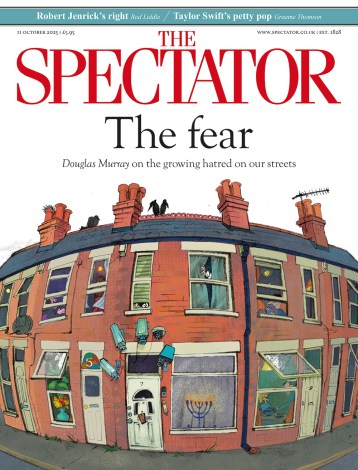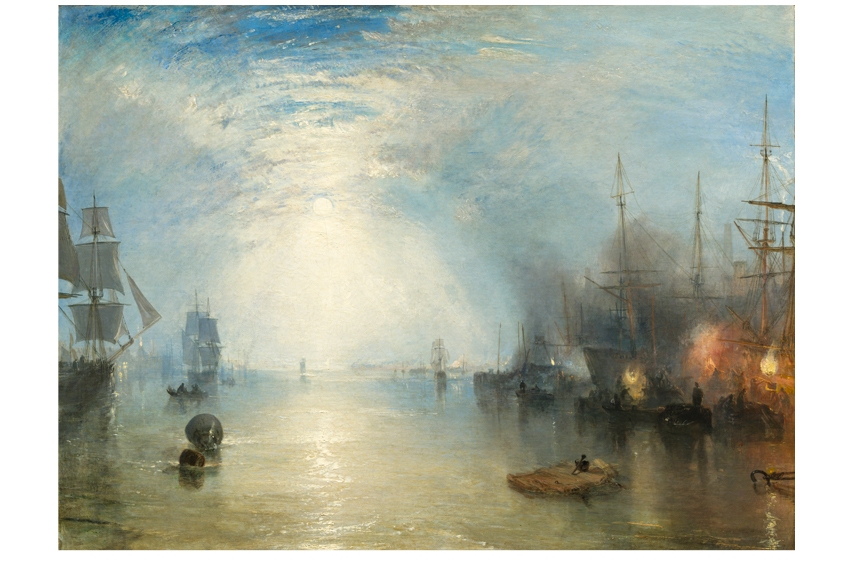One of the more considerable pleasures of exhibition-viewing outside London recently was the Claude show at the Ashmolean. London exhibitions are becoming mobbed by crowds, and there is little enjoyment in shoving or being shoved in the supposed pursuit of artistic enlightenment, and absolutely no chance to contemplate individual pictures in the hurly-burly. As the devout will queue up to kiss the wizened toe of a saint, now the football fans of art will jostle to snatch the merest passing glimpse of a Leonardo or a Freud. The being there is all: the experience has very little to do with serious looking. Afterwards, you join the ranks of the blessed and tell your friends that you too were in the presence. There is apparently much comfort to be drawn from such sharing. What a delightful contrast it was at the Ashmolean to be able to linger in front of individual Claude paintings, or the exquisite drawings, and not be harried by a press of impatient culture-tasters.
I thought of that Claude exhibition, and I thought of last year’s Poussin and Twombly show at Dulwich, as I was going round the new show of Turner and Claude in the dungeons of the NG’s Sainsbury Wing. In theory I am in favour of comparative shows, because of the new understanding they can confer, but in practice one of the parties often suffers. At Dulwich, Poussin was rather overshadowed by the dash and scale of Twombly, and at the NG I feared that Claude would be overshadowed by Turner. (For some reason it is often the most recent master who seems to benefit from these comparative juxtapositions.) Turner himself wanted his work to be hung next to Claude. He left the NG his paintings ‘Dido building Carthage’ and ‘Sun rising through Vapour: Fishermen cleaning and selling Fish’ on the condition that they would be hung between two paintings by Claude: ‘Seaport with the Embarkation of the Queen of Sheba’ and ‘Landscape with the Marriage of Isaac and Rebecca’.
The fact that Turner actively sought this conjunction and obviously desired the inevitable comparison has encouraged curators to extend the checklist and bring about further confrontations between the two painters. But artists are not necessarily the best judge of how their own work should be displayed, and the risk of Turner being diminished by the comparison must always have been a consideration. For instance, the Tate’s 2009 show Turner and the Masters did Turner no favours by juxtaposing his paintings with the likes of Rembrandt, Titian and Canaletto. Here, in fact, was an instance of the more modern artist coming off worse. So I was unsure what to expect from the NG’s new show, though hoping at the very least to be delighted by some top-quality works.
In this I was not disappointed. The exhibition begins with two major works by Claude in Room 1: ‘Landscape with the father of Psyche sacrificing at the Temple of Apollo’ and ‘Landscape with the Arrival of Aeneas before the City of Pallenteum’. A smaller work, ‘Narcissus and Echo’, makes a very strong Claudian introduction — in some ways as much Claude as you want or need before devoting the rest of the show to Turner. However, the curatorial approach of this exhibition is to mix the two artists up, and inspire the viewer to compare and contrast. Unfortunately, if you stick Turner’s ‘Narcissus and Echo’ in such exalted company, as it is here, it just looks drab and dull. The Turner cause is slightly redeemed by the inclusion of his watercolour ‘Caernarvon Castle’ and his sheet of five pencil and watercolour copies of Claude, but best not to linger here: move on towards the heart of the exhibition.
This does not occur in Room 2, rather overfilled with grand paintings by Claude or by Turner in Claudian manner, though including the marvellous ‘Seaport with the Embarkation of the Queen of Sheba’ by Claude. One of the nicest things here is Turner’s tiny rare plein-air oil sketch of the Thames near Windsor, more like a Constable than a Claude. In a display case, there’s also a beautiful Turner sketchbook of blue paper containing compositional studies for a painting hanging close by: ‘The Festival upon the Opening of the Vintage at Macon’. Room 3 contains an unexpectedly hot red Claude, ‘A View of the Roman Campagna from Tivoli, Evening’. This is the Italian room, and features a strong group of Turner watercolours from the abstract ‘Sunrise’ to a more descriptive gouache of the Campagna, also a superb Claude drawing in pinks and browns. Turner’s oil ‘Modern Italy — the Pifferari’ is magnificent; Claude’s ‘Landscape with Hagar and the Angel’, a fine work, is rather backed into a corner beside it.
Room 4 marks the centre of the display. Three Turners hold the end wall effortlessly with paths of light: in the middle is the wonderfully cool and luminous ‘Keelmen Heaving in Coals by Night’; to the left is ‘Regulus’; to the right, ‘East Cowes Castle’ with regatta. This trio sets a very high standard for this room, which is carefully maintained.
By this point in my journey through the exhibition, I thought that I was going to be seduced entirely by the later Turners and that Claude would fade from the field. But not so. I still find Turner more passionately engaged and engaging, but there are lots of cleverly selected Claudes to fight his corner, and some of the comparisons work well. For instance, Claude’s ‘Seacoast with Perseus and the Origin of Coral’ juxtaposed with Turner’s ‘Rocky Bay with Figures’, which are vaguely mirror images of each other.
But the real treat of this section of the exhibition for me is to see how Claude’s trees are reinterpreted and transfigured by Turner. Note the development from Claude’s ‘Landscape with the Marriage of Isaac and Rebecca’ to Turner’s ‘Palestrina — Composition’ (the tree’s canopy becoming denser and more clumped) and then on to Turner’s ‘Southern Landscape with Aqueduct and Waterfall’ (the canopy blasted open again with light). From there the development becomes more extreme as the entranced visitor moves into Room 5, with the ghostly and intensely modern ‘Sunrise, a Castle on a Bay: Solitude’ and the deliquescent ‘Landscape with Water: Tivoli’. The latter is customarily claimed as unfinished, but actually Turner had taken the painting as far as he wanted, so in that sense it is finished, though that seems to be just a bit too radical for the academic mind. Nevertheless, an outstanding atmospheric beauty.
Also in Room 5 is a charming trio of Turner watercolours including a gorgeous study of ‘The Château at Arques-la-Bataille, near Dieppe’ — I never knew a landscape could be so successfully aqueous — while back in Room 4, Turner dissolves the pollution of an industrial town, probably Birmingham, in rosy light. The overall impression produced by the exhibition is one of light and energy. Of course Turner wanted his work to be universally acknowledged as surpassing Claude’s, and though such hierarchical judgments go against the grain, I feel compelled to say that Turner’s magisterial treatment of light and form does rise beyond anything Claude attempted.
Turner revered and imitated Claude, he learnt an enormous amount from his example, but he also managed to excel his teacher. In this exhibition, their work sits somewhat uneasily side by side; although there are many fine things by Claude, this is Turner’s show.






Comments